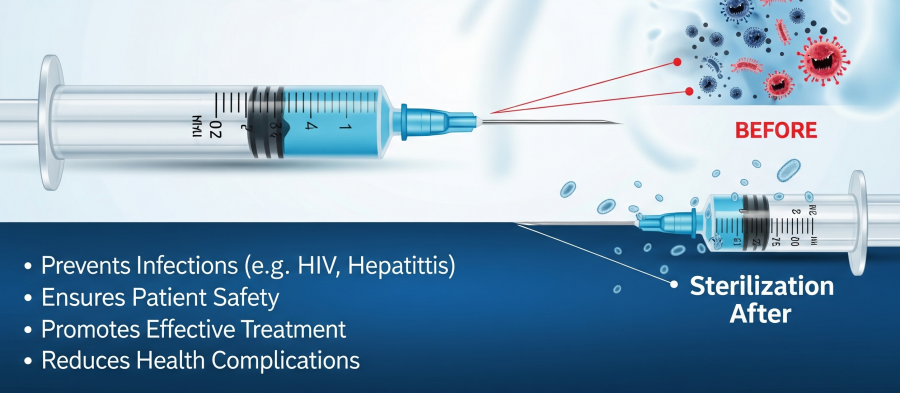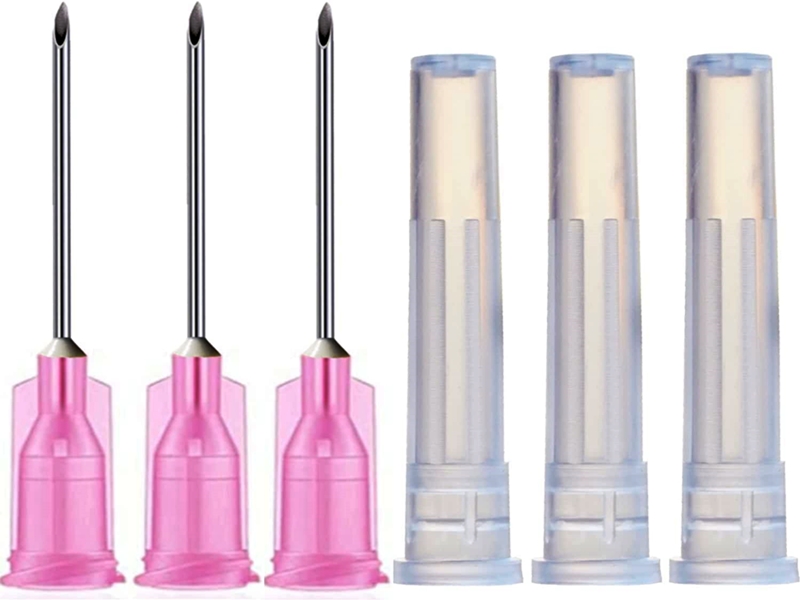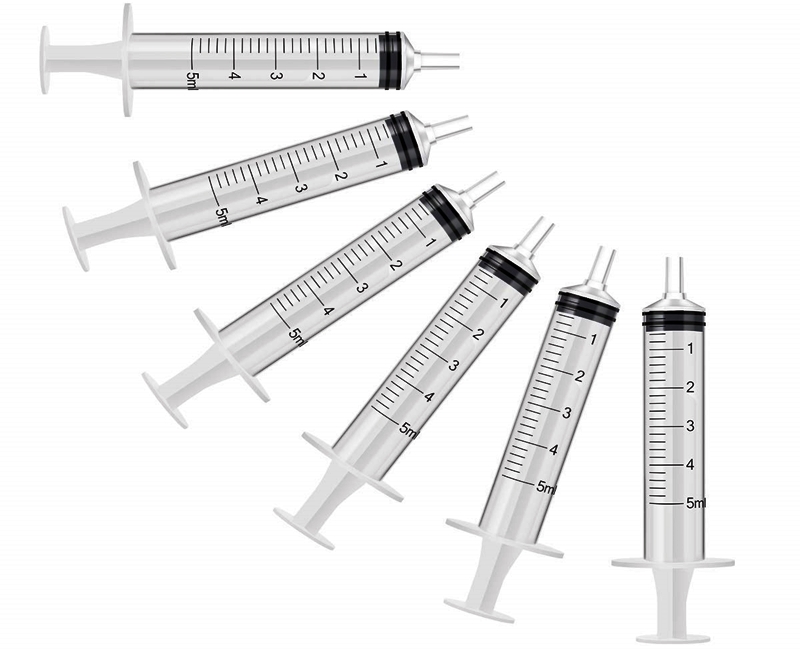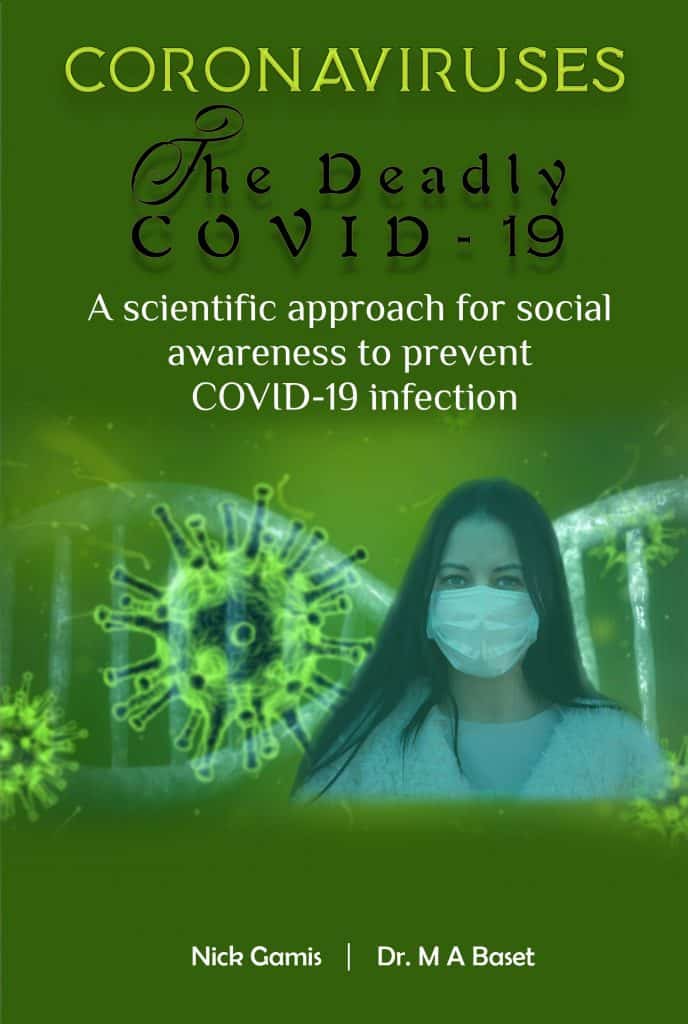When injuries happen, most people are usually caught off-guard. I remember when I was riding my bike on a rainy day towards home when I slipped and fell on a trench. A passerby came to my rescue but I had a glass splinter in my hand. It was very painful and I couldn’t contemplate what to do at that moment. So I headed home and all I found was an old sewing needle that could help remove the glass splinter. However, I was wondering how to sterilize a needle to ensure that it is safe to use?
You never know when you need a needle to sterilize! You might need it to perform a surgical procedure, insert a needle in a patient, or even to inject someone who is not feeling well. Sterilization can be a difficult task to learn, and this blog post is here to teach you how to sterilize a needle properly.
Why Needle Sterilization is Important

Using a sterile needle is essential for protecting your health. Each time a needle pierces the skin, it creates a direct entry point for harmful microorganisms. Without proper sterilization, the risk of infections, painful abscesses, and serious diseases such as HIV or hepatitis increases.
Key reasons to sterilize a needle:
- Prevents the spread of bloodborne diseases like HIV and hepatitis
- Reduces the chance of local skin infections and abscesses
- Ensures safer handling during first aid, piercing, or tattooing
- Provides peace of mind when dealing with minor injuries at home
Sterilization also reflects the balance between safety and convenience:
- Professional sterilization in hospitals and studios uses autoclaves and certified equipment for maximum safety
- At home sterilization methods such as boiling, flame heating, or alcohol provide practical solutions in emergencies
If the needle is intended for injections, always use a factory-sealed sterile needle. For minor first aid, careful sterilization at home helps lower infection risk and makes handling safer.
How to sterilize a needle at home?

Sterilization is killing harmful microorganisms by subjecting them to an environment that they can’t endure. It can be done through heat application or the use of chemicals. There are many methods that you can use to sterilize a needle. I will focus on the most practical way that you achieve this process at home without using advanced equipment. Therefore, let’s have a look at how to sterilize a needle.
Preparation
Before sterilizing a needle, a little preparation goes a long way. Handling a needle carelessly can increase the risk of contamination or accidental injury, so it’s important to set up properly. Start by gathering the essential tools: gloves to protect your hands, a clean and disinfected surface to work on, tweezers for handling the needle without touching the tip, and alcohol pads to pre-clean the needle or surfaces.
When handling the needle, always hold it by its base and avoid touching the sharp tip. Keep your workspace clear and organized to prevent accidents and ensure that the sterilization process goes smoothly. These small precautions make a big difference in safety and hygiene.
Quick Preparation Checklist:
- Wash your hands thoroughly before starting.
- Clean your workspace with disinfectant or alcohol.
- Gather essential tools: gloves, tweezers, alcohol pads, and the needle.
- Always handle the needle by its base, never the tip.
- Keep your workspace clear and organized to avoid accidents.
Following these simple steps creates a safe environment for effective needle sterilization, reducing the risk of infection or injury.
Method 1: Steaming a needle for sterilization
Steaming is one of the simplest and most affordable ways to sterilize a needle at home. Heat above 120°C effectively kills almost all microorganisms, making it a reliable method. To do this safely:
- Place the needle in a pot with enough water to generate steam and cover with a lid
- Steam on the stove for about 20 minutes to ensure thorough sterilization
- Carefully remove the needle using tweezers and place it on a clean, dry cloth to cool
If you have access to an autoclave, a professional sterilization tool, it can make the steaming process even more effective and faster.
Method 2: Bake the needle in the oven for sterilization
Baking is especially effective for needles used in tattoos, piercings, or medical procedures. High, consistent heat ensures all microorganisms are destroyed. Steps:
- Wrap the needle securely in a clean cloth to protect it from direct heat
- Place the wrapped needle in an oven set at 340°F (about 170°C) for one hour
- Avoid dry heat without wrapping, as it can make the needle brittle and unsafe
This method provides thorough sterilization for home or professional use.
Method 3: How to sterilize a needle with fire?
Sterilizing a needle with fire is a fast, convenient method if you don’t have an oven or autoclave. Heat kills pathogens quickly, but caution is important. To do it safely:
- Hold the needle securely with tweezers
- Pass it slowly through the top of an open flame until evenly heated
- Avoid burning the needle, as excessive heat can cause it to break or warp
This method is ideal for small-scale or urgent sterilization, but always prioritize safety.
Method 4: How to sterilize a needle with alcohol?
Alcohol provides an extra layer of protection, especially when needles are used on the skin. After heat-based sterilization:
- Soak a sterile gauze pad in alcohol and thoroughly wipe the needle
- Disinfect any tools used, such as tweezers
- This ensures any remaining microorganisms are eliminated and the needle is safe to use
Combining alcohol with heat methods creates a highly reliable sterilization process suitable for both home and professional use.
Rinsing and storing the needle
After using alcohol to sterilize your needle you need to rinse it before your store in a clean and dry place. If you intend to use it right away then you will be using a well-sterilized needle. You can rinse the needle using 5% chlorine. It is a bleaching agent that ensures the needle is effectively sterilized. If you don’t have chlorine you can use hydrogen peroxide or ethanol.
Caution: It is important to understand that needle that has been used for medical use should not be re-used. Even if you opt to sterilize it don’t use it for injection because it requires advanced sterilization using medical equipment. Therefore, the needle that you have sterilized at home can be used for minor cases such as removing splinters. Additionally, if a sterilized needle is placed on unsterile surfaces it ceases being sterile.
Clean the syringe
Once your needle is properly sterilized, it’s important to clean the syringe as well. Start by filling the syringe with clean water, then shake it gently for about one minute to dislodge any dirt or residue trapped inside. After shaking, carefully expel the water through the nozzle. This simple step ensures the syringe is clean and ready for safe use with the sterilized needle.
Disinfect the syringe

Disinfecting the syringe is an essential step because it eliminates invisible pathogens that could cause infections. To do this, fill a container with a mild bleaching solution and draw it into the syringe using a straw or nozzle. Shake the syringe gently for about one minute to allow the solution to reach all internal surfaces, then carefully expel the bleaching agent. This process ensures the syringe is properly disinfected and safe for use with a sterilized needle.
Rinse the syringe
After disinfecting the syringe, it’s important to rinse it thoroughly with clean water. Draw water into the syringe from a container, shake it gently, and then expel the water. To ensure the syringe is completely clean, repeat this process two or three times. Proper rinsing removes any leftover disinfectant and ensures the syringe is safe and ready for use with a sterilized needle.
You may also read: How To Sterilize Needles For Piercing Properly?
Final Verdict
Congratulations, brave reader! You have mastered the art of sterilizing a needle in the most enchanting and lively manner. With this newfound skill, you are now ready to embark on your own needle sterilization adventures, spreading cleanliness and mirth wherever you go.
Therefore, If you need to sterilize a needle to remove shallow splinter then the most viable option is using steam or boiling. However, if you have a splinter that has been embedded deep into your skin you should seek medical help so that doctors can help you in removing it. This is to minimize the risk of infection.
Generally, sterilization of needle is a precautionary measure before you use it. Choose a method that you are comfortable with. Ensure to wash your hands using hydrogen peroxide or alcohol before using the sterilized needle. Always hold the non-pointed end to ensure the pointed part remains sterile all through. This is one of the most effective and simple methods that you can minimize infections. I hope it’s clear now and you know how to sterilize a needle.
People also ask – FAQs
Using sterile needles is crucial to prevent the transmission of infections and reduce the risk of complications. Sterile needles ensure a clean and safe environment for medical procedures, protecting both the patient and the healthcare provider.
Reusing needles or using improperly sterilized needles can lead to various risks, including the transmission of infections such as HIV, hepatitis, and other bloodborne diseases. It can also cause local infections, abscesses, or other complications at the injection site.
To sterilize a needle by boiling, it is generally recommended to boil it for a minimum of 20 minutes. This duration allows for sufficient heat exposure to help reduce the risk of contamination. However, it’s important to note that professional sterilization methods are more effective and should be preferred whenever possible to ensure proper hygiene and safety.
It typically takes about 5 to 10 seconds to sterilize a needle with fire. However, it is crucial to note that using fire to sterilize a needle is not a recommended method. Professional sterilization techniques or obtaining sterile needles from healthcare providers are the preferred and safer options to ensure proper sterilization and minimize the risk of infections or complications.
Disinfectants like Barbicide can help sanitize a needle, but they may not provide complete sterilization. If you choose to use disinfectants, follow the manufacturer’s instructions carefully. However, professional sterilization methods are preferred to ensure proper hygiene and safety.


